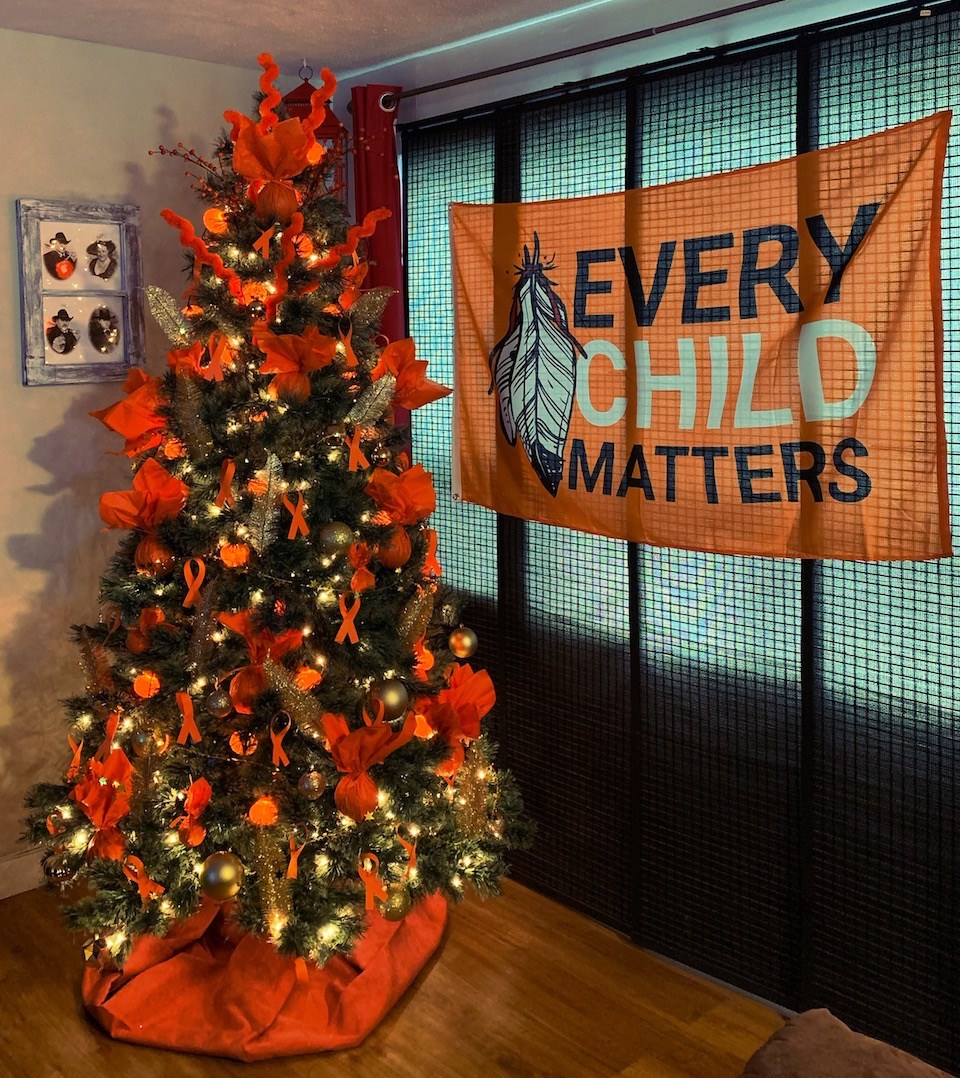For Christopher and Sandra Hart of Thompson, this year’s Christmas tree decorations aren’t only a way to celebrate the festive season.
They’re also reminders of the children who didn’t get a chance to celebrate the holidays with their families over the 100-plus year history of Canada’s residential schools, many of which were run by churches.
“I decorated my tree this year with the theme of Every Child Matters,” says Sandra, who isn’t Indigenous but is married to and has a son with Christopher, who is. He is also the child of a residential school survivor. ”It’s mostly orange with the remembrance ribbons in orange and gold feathers.”
In a year that saw more light shone on the horrific history of residential schools for Indigenous children than there was even in 2015 – when the Truth and Reconciliation Commission issued its final report – as a result of unmarked graves being located at several former school sites, and the first-ever National Day for Truth and Reconciliation on Sept. 30, Hart said it didn’t seem right to celebrate Christmas without at least reflecting on the past.
“There is a dark history in Canada and we have to own that and we have to acknowledge the mistakes of the past,” she said. “Many, many children for many years never made it home for Christmas or were never allowed to go home for Christmas from residential schools and I feel like every child matters and should be remembered. Canadians should be doing this on a more regular basis and it should be the focus of more conversations.”
Hart’s husband, who grew up in Churchill, shares a mother who was sent to residential school with eight siblings.
“They all have the effects of intergenerational trauma,” says Sandra, who has spent a lot of time studying residential schools and their repercussions as a University of Manitoba Northern Social Work Program student. “They lost their language because their mom never spoke it after she came back from residential school and they didn’t grow up in the traditional ways that she was raised before she went to residential school so they lost a lot of that. His sister is making a great effort to try and reclaim that history and help teach the rest of the family the things that her mom couldn’t because they were painful for her, because they were reminders of what she wasn’t allowed to do at residential school. It wasn’t my generation but it still affects people in my generation.”
Beside the tree is an “Every Child Matters” banner that had been up in the Harts’ window for several months before it was moved.
“It’s always a good time to spread awareness… and that’s why we chose to do our tree that way this year,” Sandra says. “When your friends come over, it sparks off that conversation. You remember the lost children and … the importance of reconciliation because I feel like that’s a good part of what we have to do as Canadians to start that process of being sorry for what happened. You remember the sadness of Every Child Matters and that’s important that we all stay centred on that. We cannot forget what happened.”





